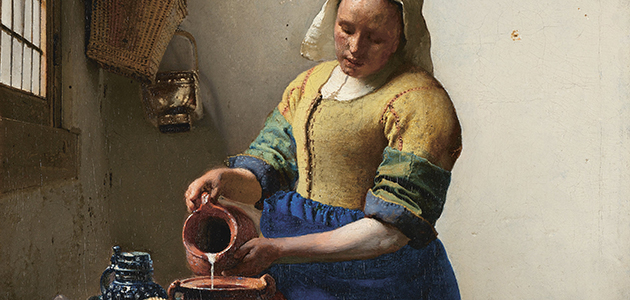‘We’ve all had the emotionally jaw-dropping experience of a new, deeper perspective emerging via art
Thought for the week: Neil Morgan on the bigger picture

How can we tell the difference between something real, and something fictional, or unreal? One answer is that for something to count as real it must be something we can encounter. We encounter another vehicle when we collide with it. We do not encounter the yeti, or the unicorn in that way. Can we encounter God?
Most theists do not think of God as another entity in the world – a spooky extra item somehow added to life. Rather, the awareness of God provides a different perspective that infuses everything; it provides a sense of openness, of receptivity to mundane experience, which transforms it, and gives it meaning.
This can be made clearer through the analogy of art. We have almost all had the emotionally jaw-dropping experience of a new and deeper perspective suddenly emerging via a work of art, or a great piece of music. If we can, even for a moment, suspend our own selfish, preoccupied stance – our ego – in looking at a piece of art, we can be transformed. Something new is then revealed to us. Everything – even, importantly, the very act of perception itself – is altered, and is suddenly completely different. The whole world, including our own life, is bathed in a different, more expansive, more meaningful light, through the message in the image. Suddenly, in a way that is difficult to define, we are opened to meaning. Then, through the artwork, meaning somehow pours in on us. Meaning is revealed to us as a pure gift – as a revelation.
In Quaker faith & practice 21.34 George Gorman writes about just such an experience: ‘One of the most vivid experiences on my part was sitting quietly for at least an hour before a picture by the Dutch painter Vermeer.’ He describes his feeling and adds: ‘Something was given to me that I can only describe as, literally, a transcending of the normal everyday world. This quite simple secular act was for me a truly worshipful experience.’
Might we see this as more than secular? Might it be more like a revelation? Language and words divide us. Words, somewhat coldly, separate things – an apple from a pear, say. They define. They ‘murder to dissect’, as William Wordsworth had it. What Vermeer is showing us, instead, is something very different.
He shows us a ‘seeing through things’, to something beyond – a sudden bringing together, an illumination that adds something of immense significance to the everyday. Something beyond the picky, certain I-know-best-and-I-can-tell-you kind of definition. He evokes something immanent in the viewer. This is very concretely about this world, but it also opens a portal to the divine. Vermeer’s art is not only a picture, but also a sort of icon. Does it, in this way, embrace God?
You need to login to read subscriber-only content and/or comment on articles.
